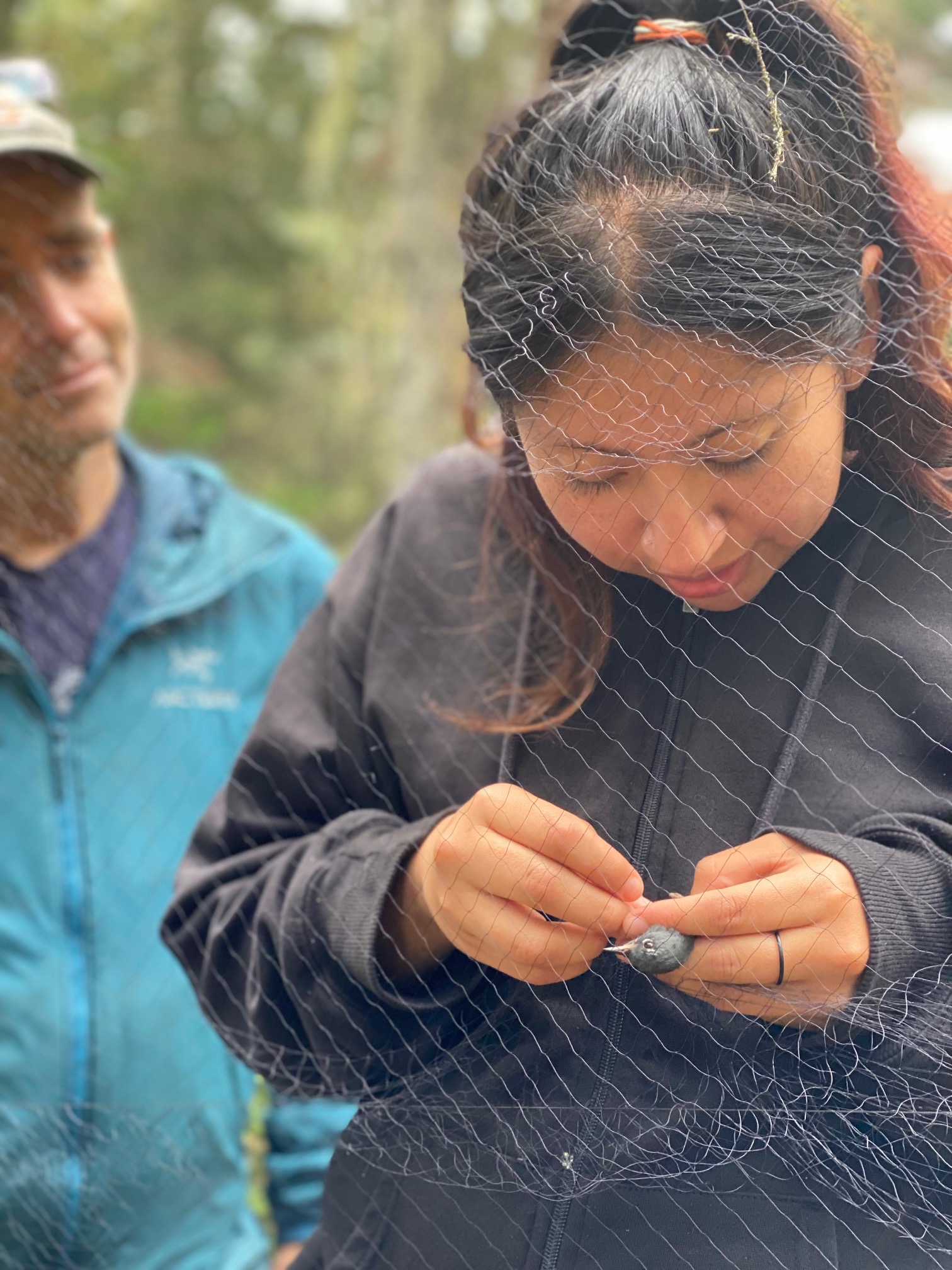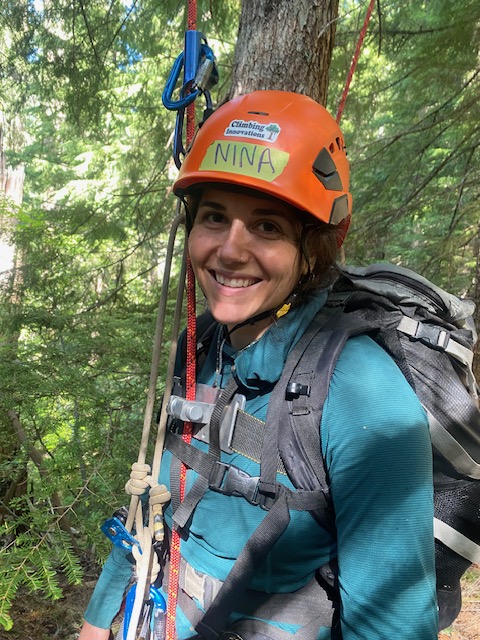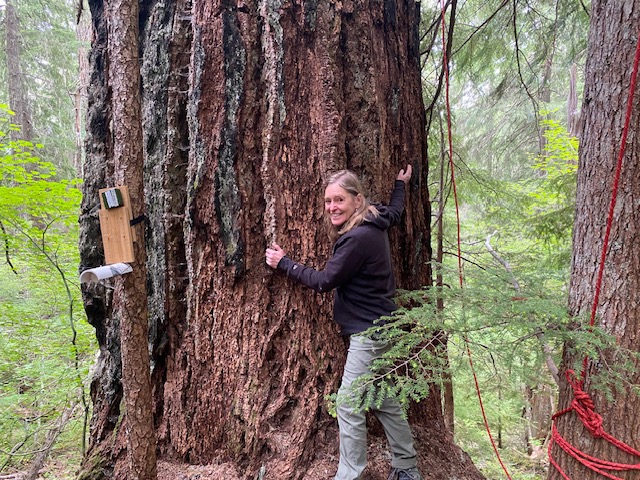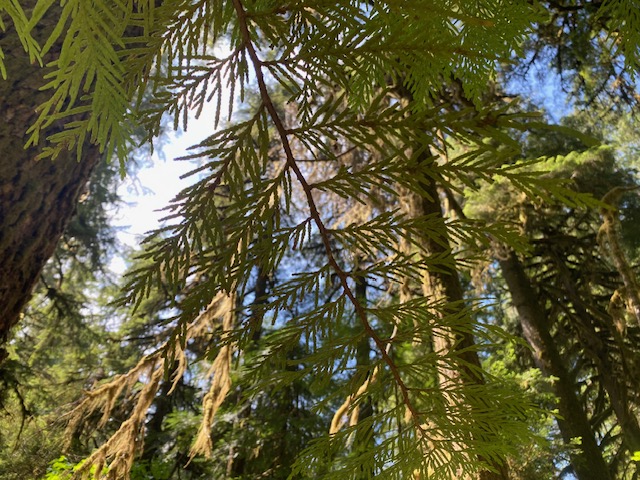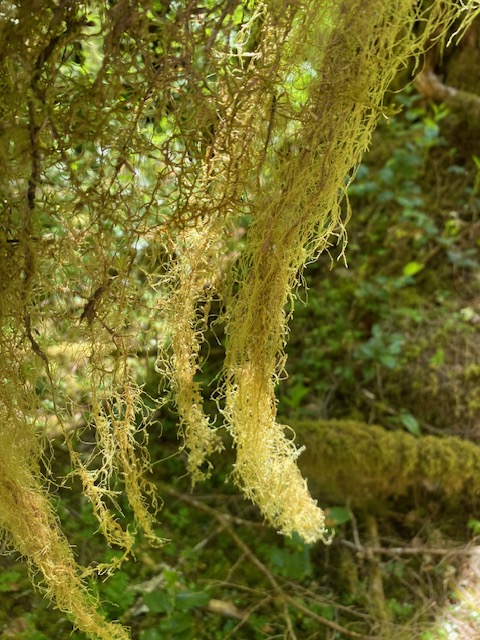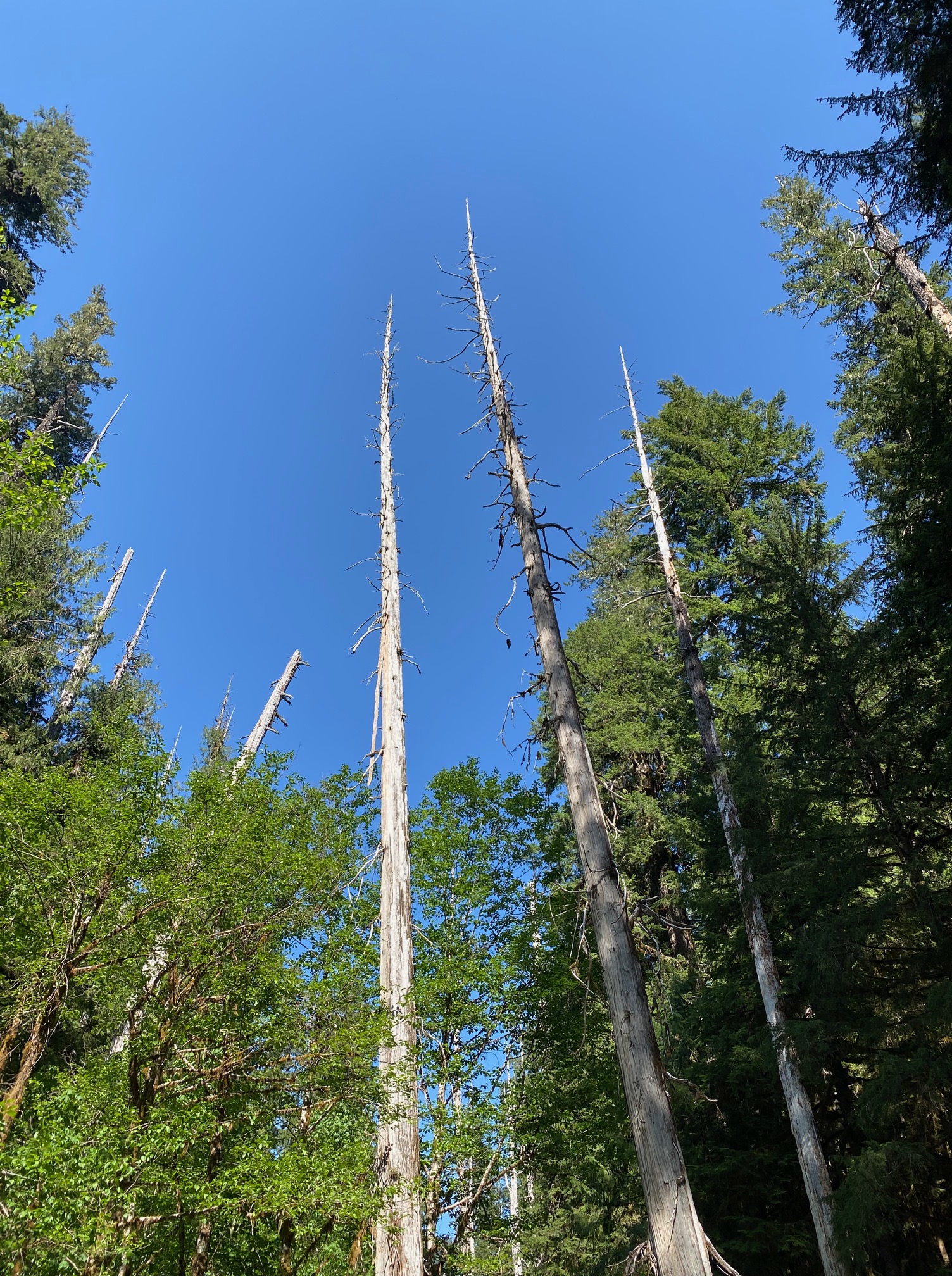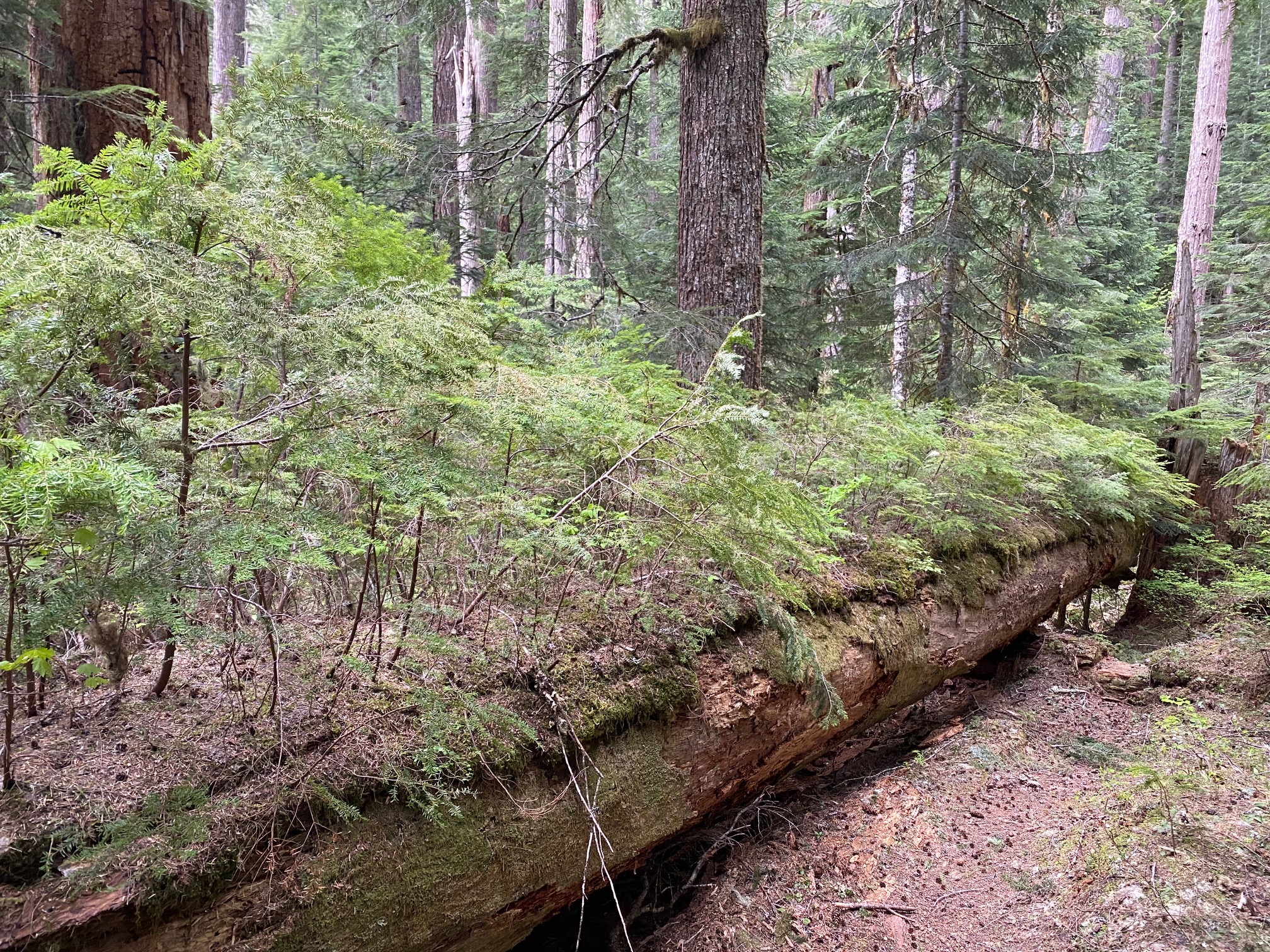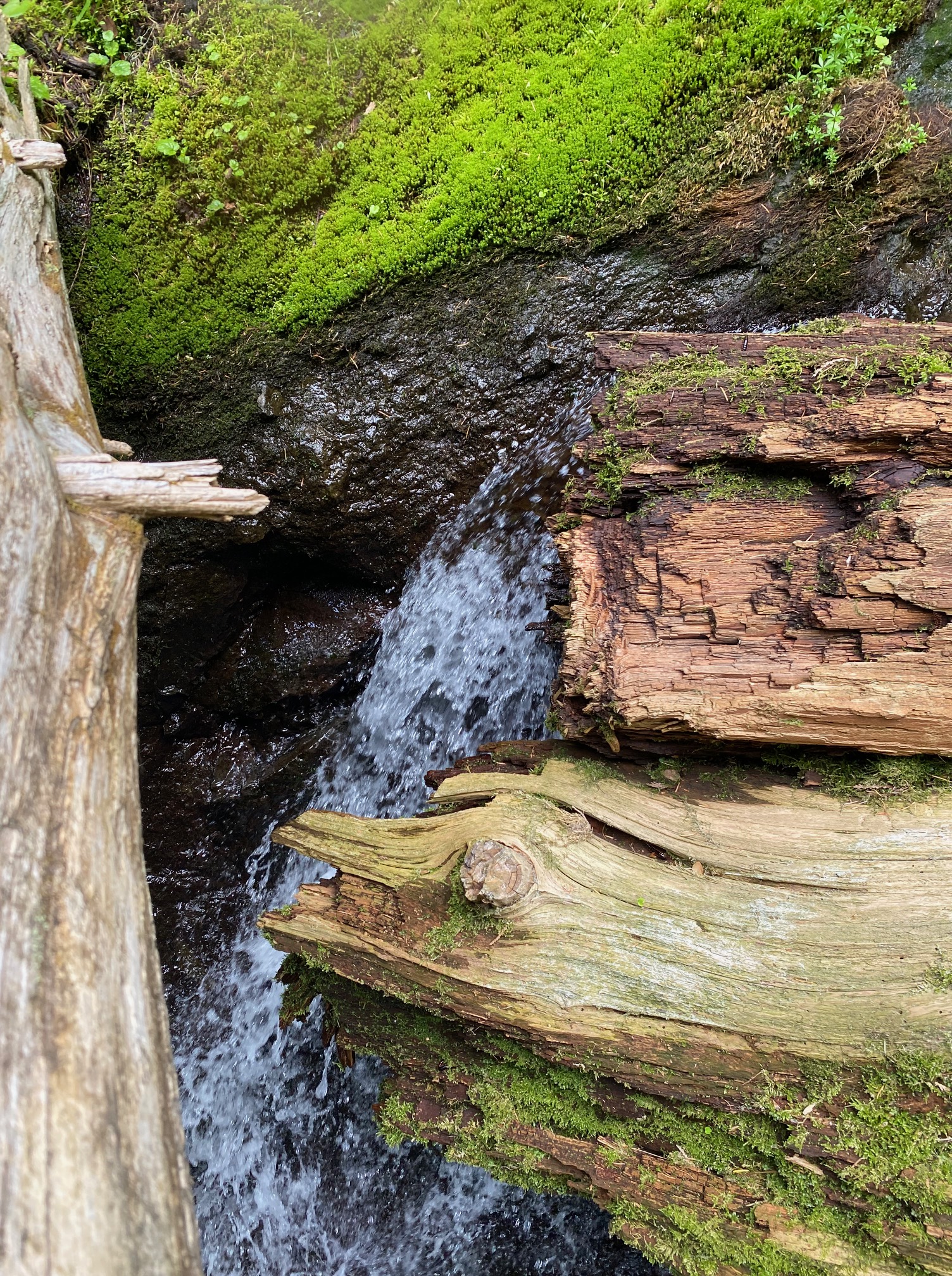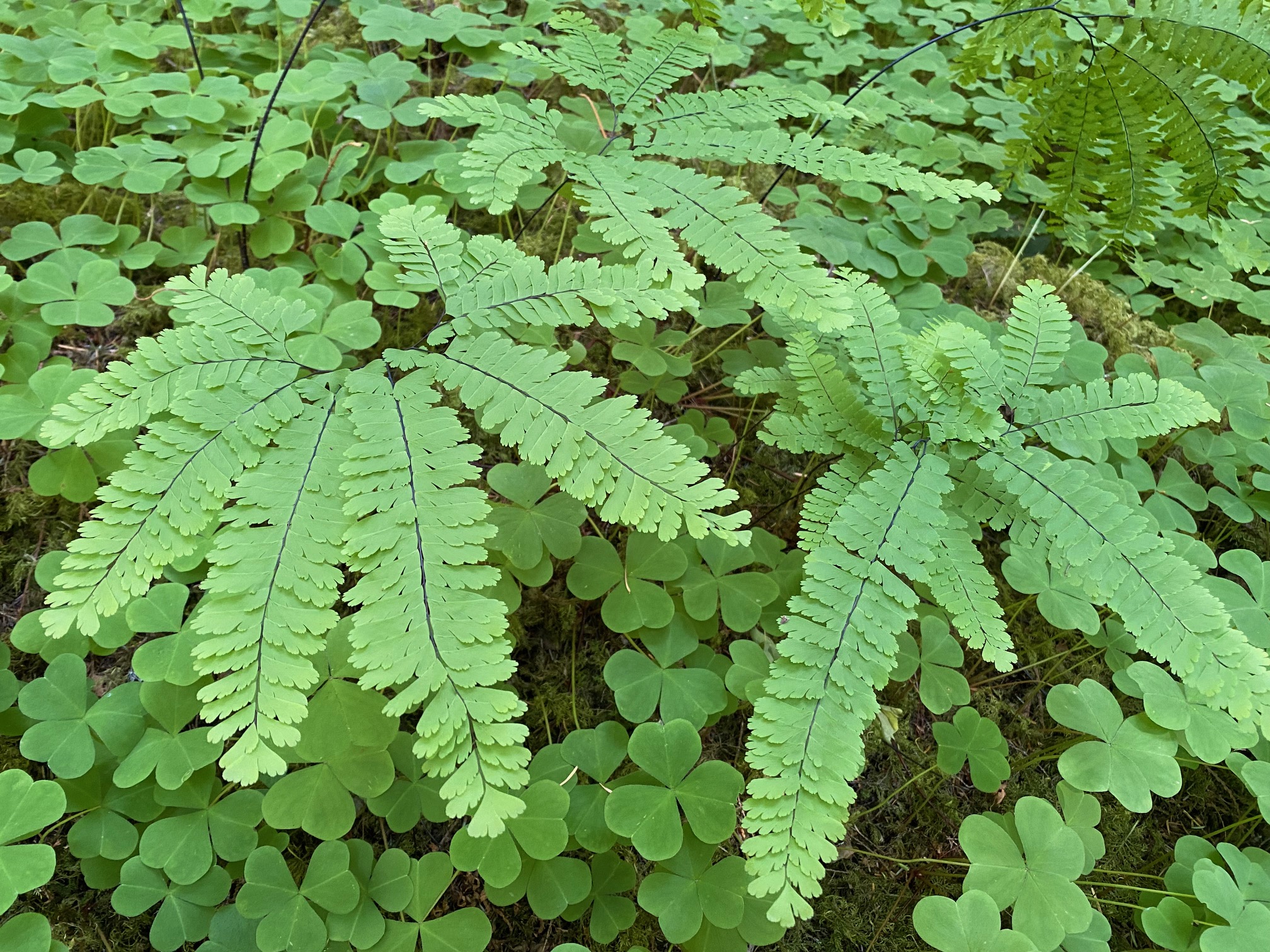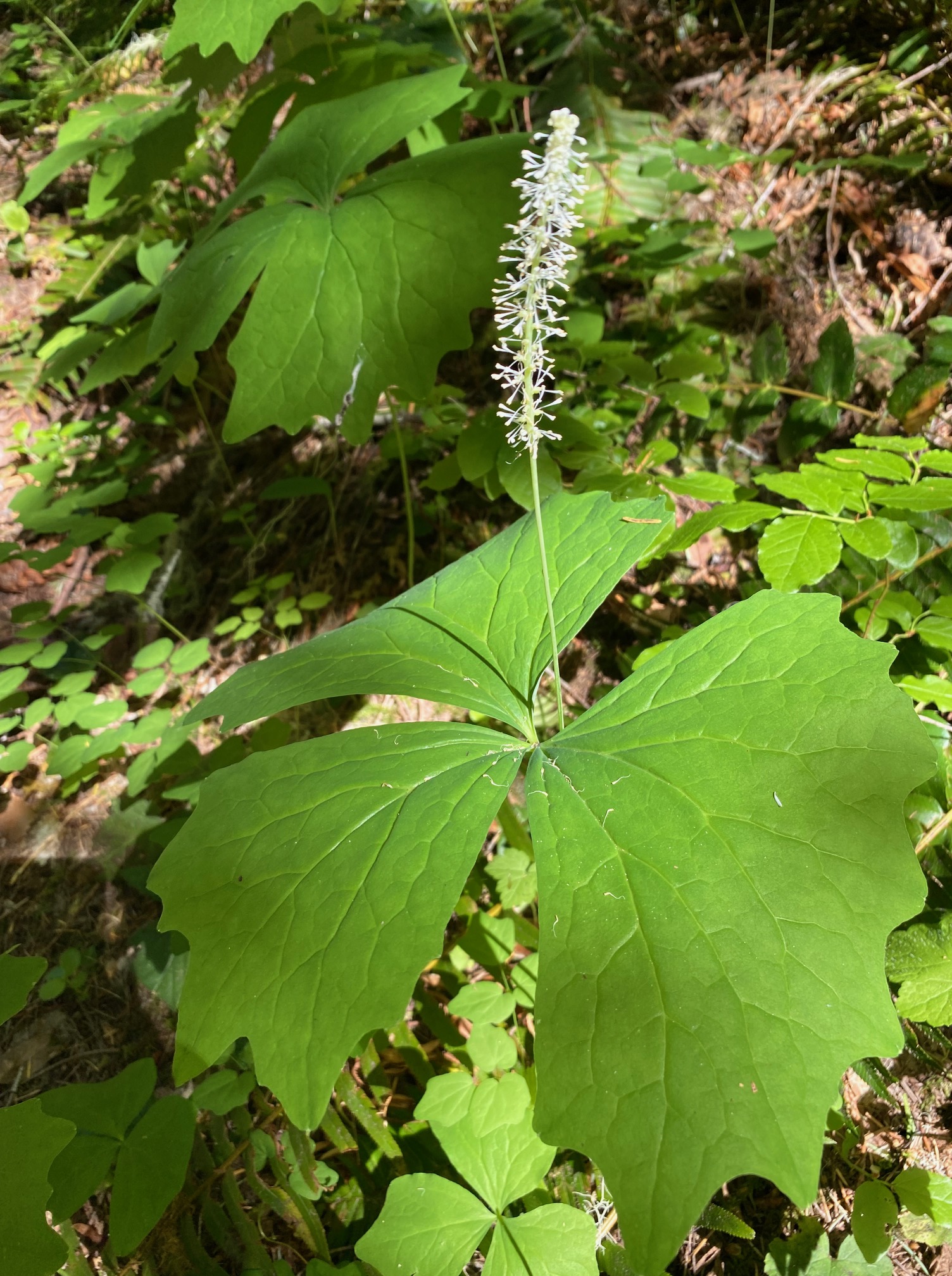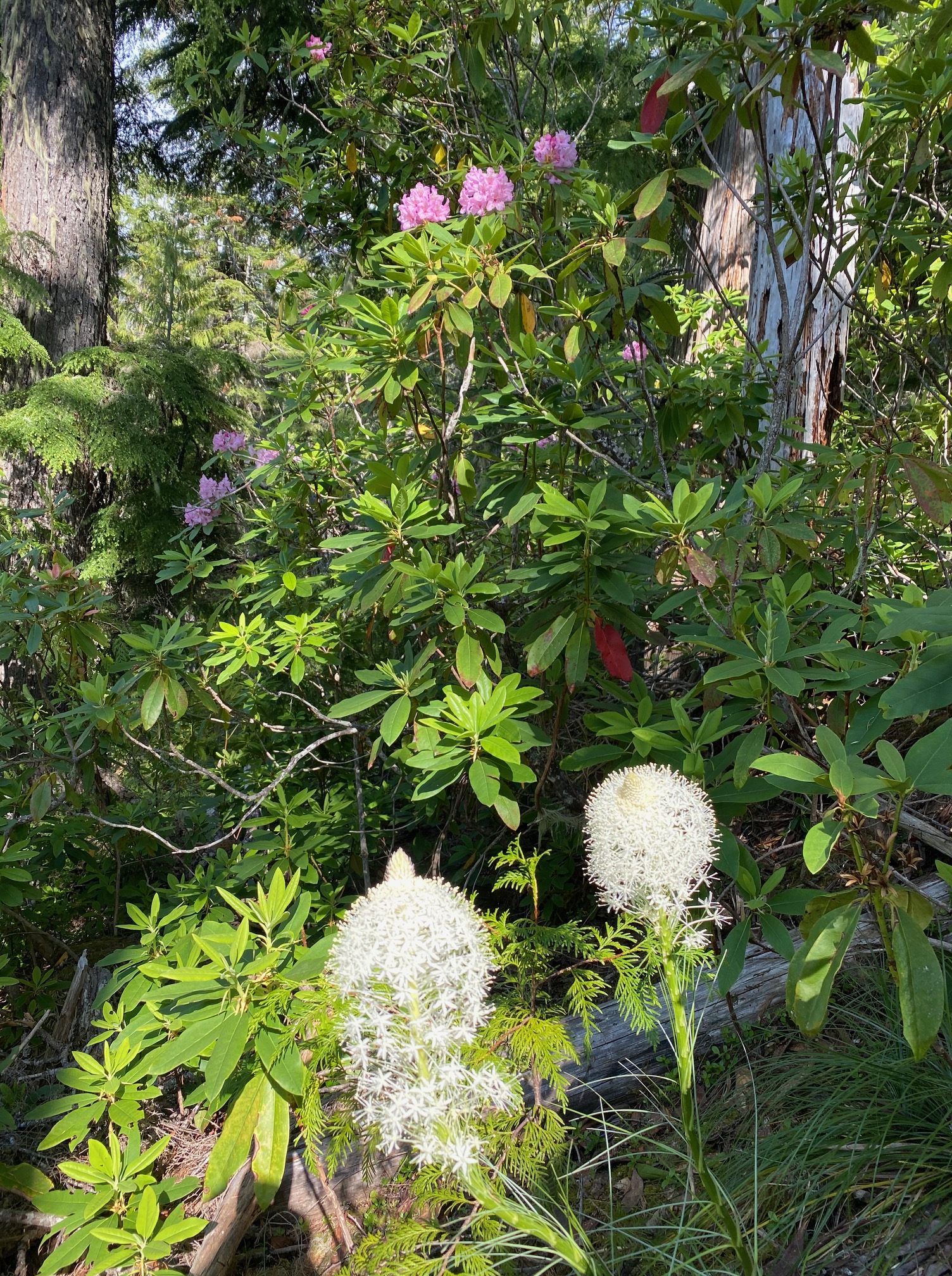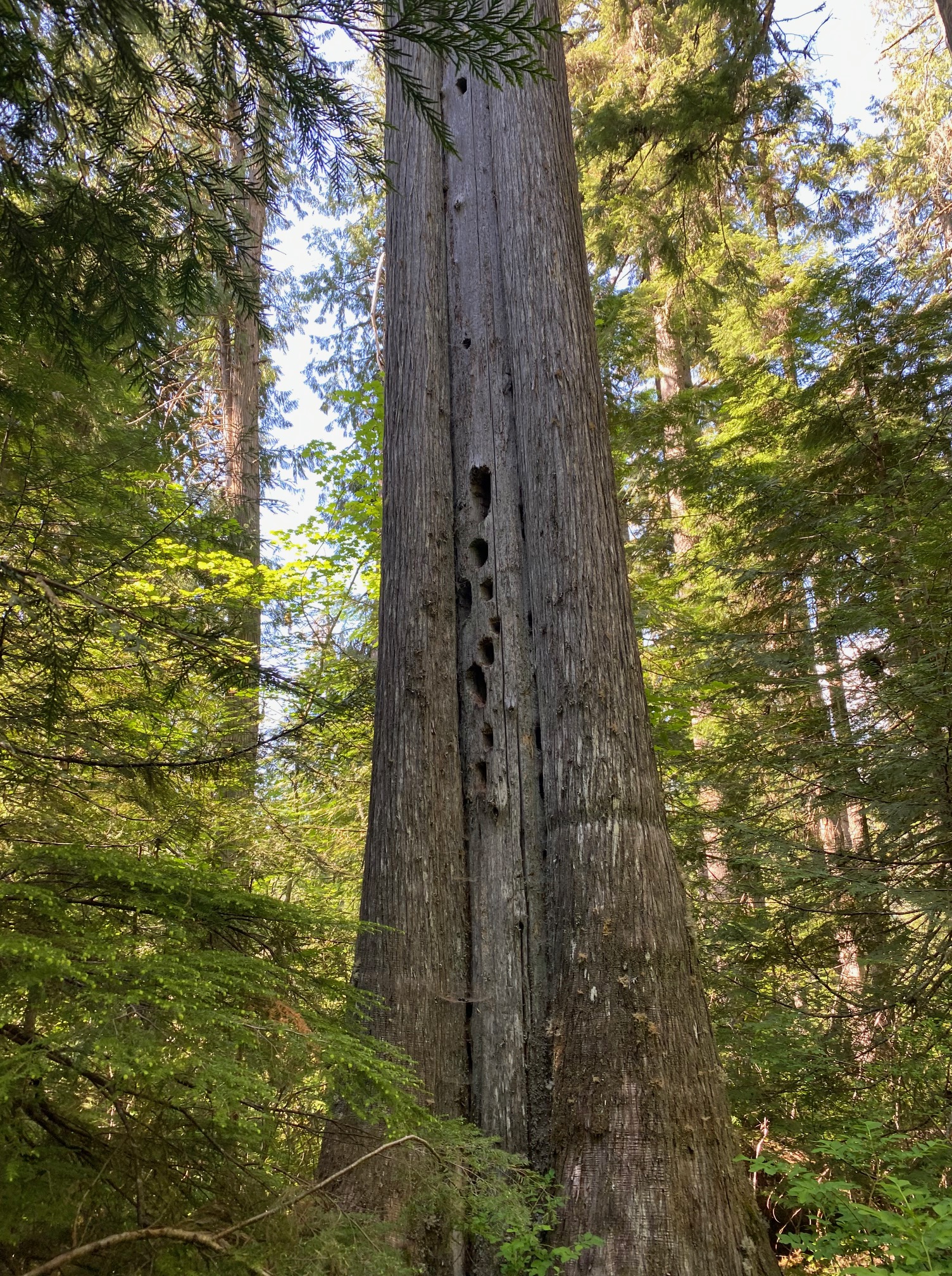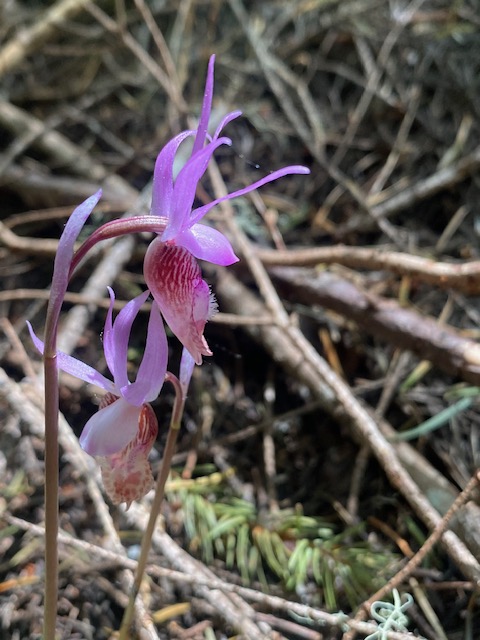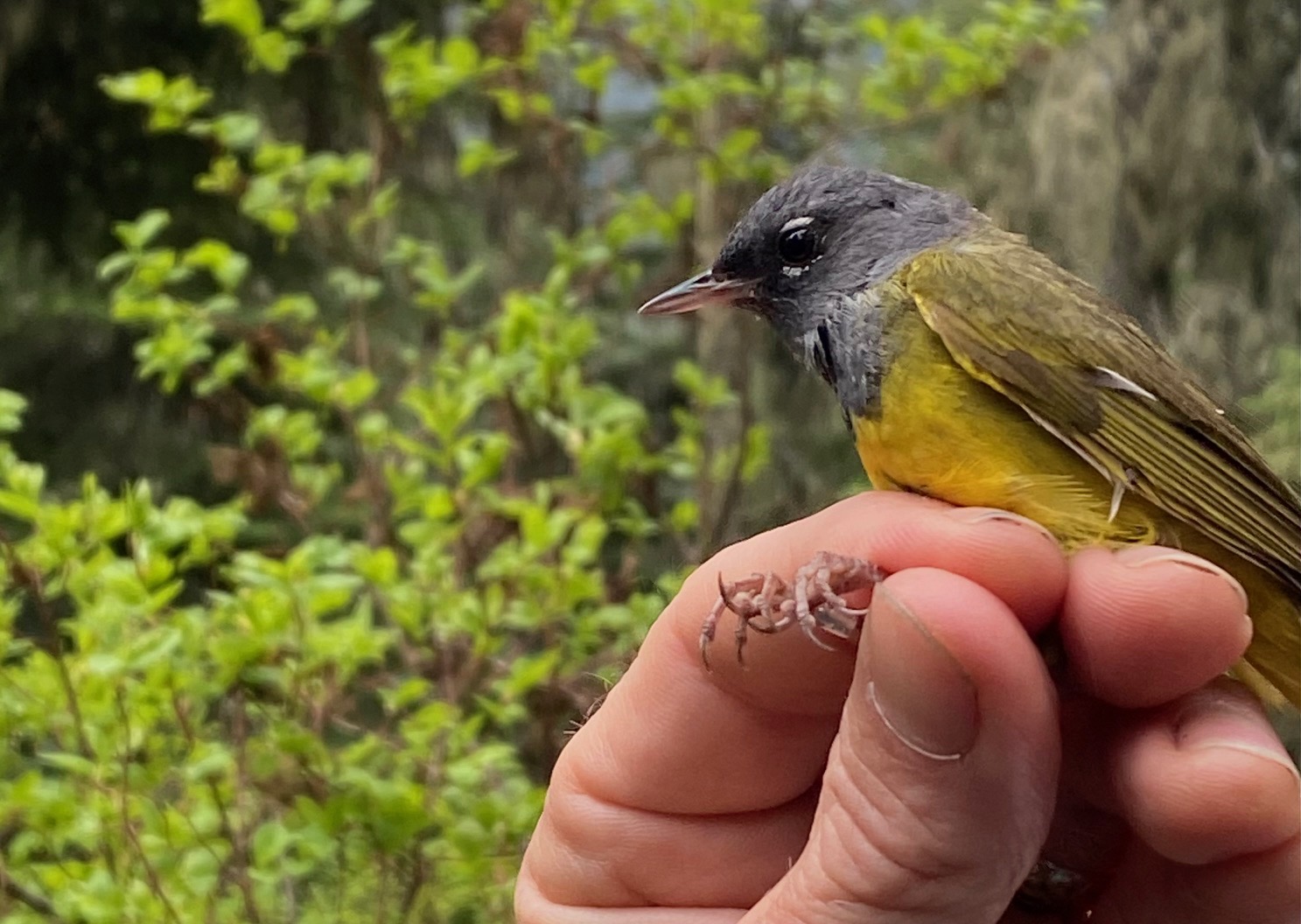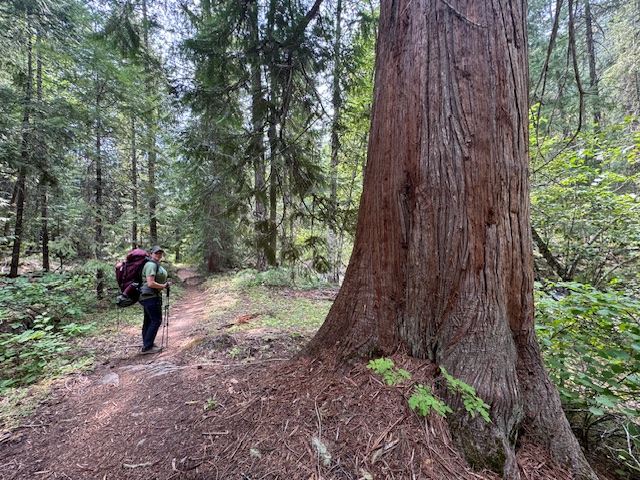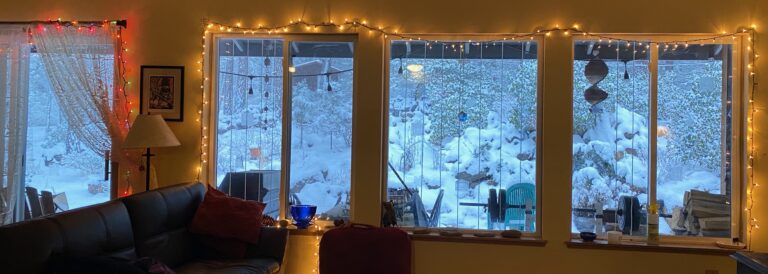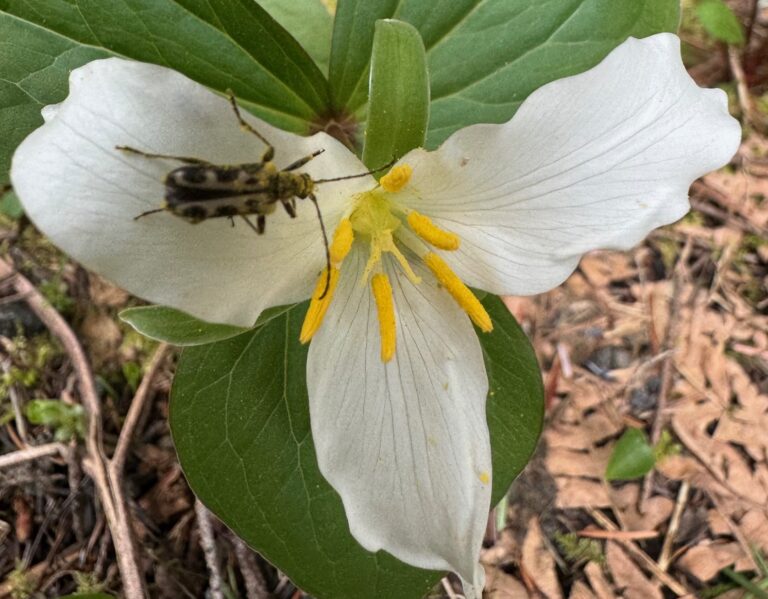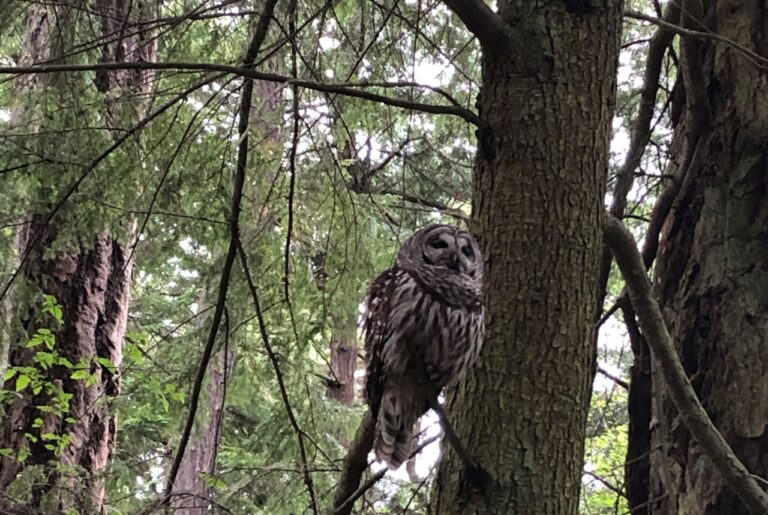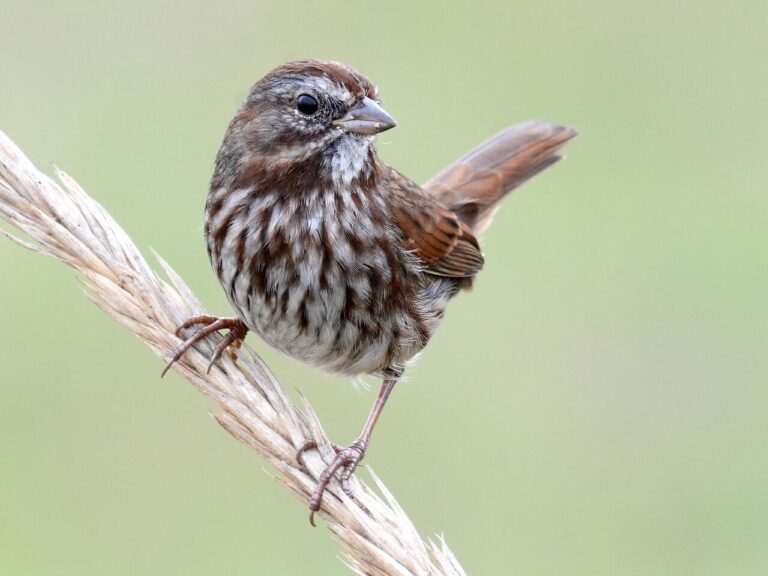What do Birds Ask of Us?
I’m holding a hermit warbler –my right hand cupped gently under the bird as my left forefinger and middle finger cradle his neck (the bird bander’s hold). The fine feathered warmth of his tiny body pulses with radiant life. I open my left hand and he rockets upwards in a dandelion-yellow and black fluff. Landing briefly on a nearby hemlock branch, he wings into the shadowy embrace of trees rooted in place for centuries.
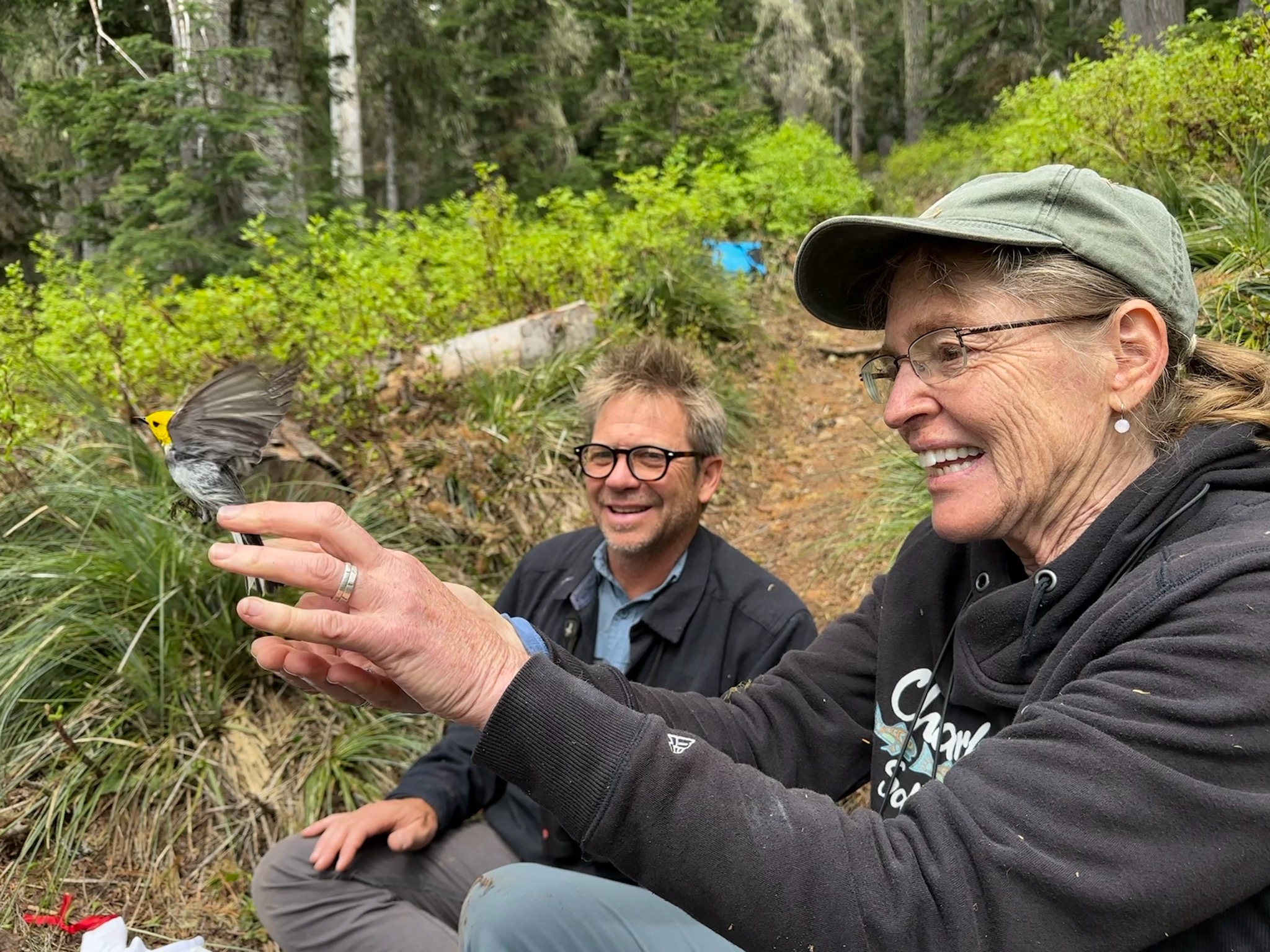
Here, at the H.J. Andrews Experimental Forest of Oregon’s western Cascade mountains, bird research is in full swing this first full week of June. I’ve come to partake, immerse, and learn from the scientists and students. Their ecological and behavioral questions form silken strands of inquiry. Each separate investigation is linked in patterned and growing webs–ever more intricate.
Research coming from the Andrews is revealing a suite of birds thriving best in the old-growth or ancient forests with all the dynamic forces of wind, fire, and flood over thousands of years. The secret lies in complexity, which is the key to biodiversity. Climate change is the hovering question.
Fieldwork can be painstaking, grueling, bruising, and confounding, despite the romanticism of a bird in the hand, climbing a 200 or 300-foot-tree, and days spent in a melodious forest. Days illuminated in the softest of mosses, ferns, shamrocks called redwood sorrels, and exquisite wildflowers like vanilla leaf, trillium, and calypso orchid. Days of light or heavy rain, thunderstorms, mosquitos, and –for my four days at the Andrews–every step a crunchy, twig-breaking reminder that the last hard rainfall came three weeks earlier.
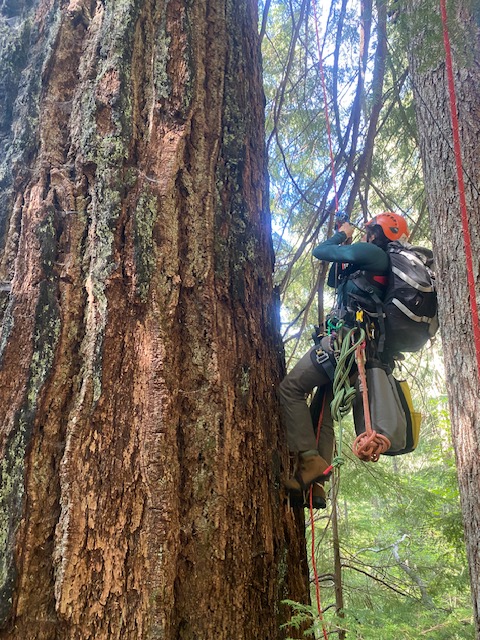
The birds lead. The investigators follow. If I were to imagine a different Lorax, my version of the Dr. Seuss character would be a forest bird singing those ringing lines: “I am the Lorax. I speak for the trees.”
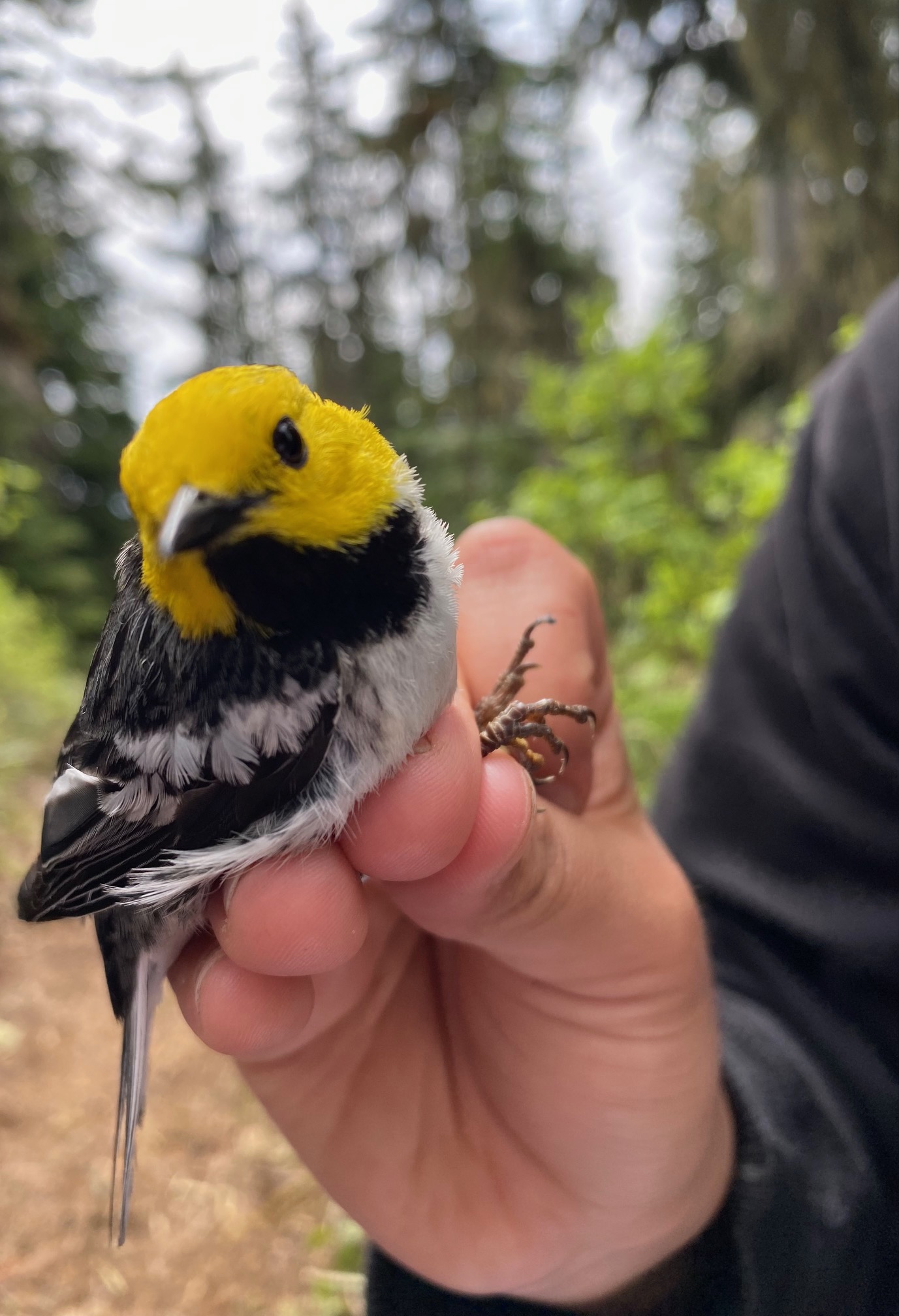
I joined the bird banding team (six including me) at the leisurely hour of 5:30 a.m.–after pedaling my bike at dawn from a nearby campground to the headquarters. Their morning’s initial quest? To see if they could catch black-throated gray warblers for an undergraduate study investigating insect diets of ten songbird species.
We headed first to a younger, low-elevation grove within earshot of the rushing constancy of Lookout Creek. Here, lofty, mossy maples and cottonwoods intermingled with Douglas-firs. The air felt as green as the water-loving maidenhair ferns.
After setting up two sets of mist nets placed well apart, the two teams of three prepared for action. But the playback calls (audio recordings of songs to attract territorial males) only teased the savvy black-throated gray warblers. A male 40 feet above us resisted all temptation to chase off a cheeky faux rival singing from below. Instead, we were treated to quickening rippling songs...zeedle zeedle zeedle zeet-chee!
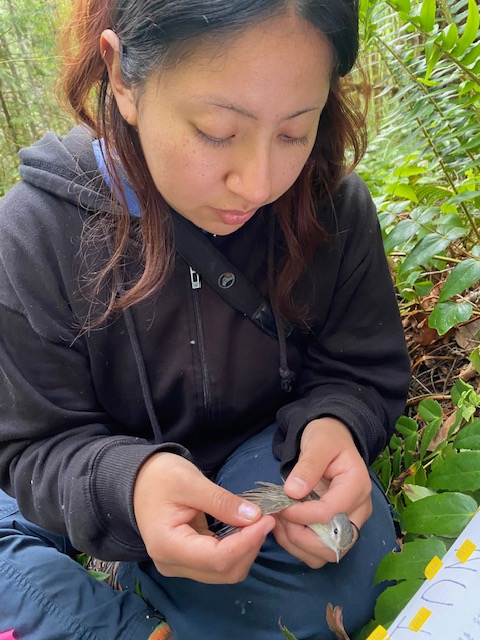
So the teams switched gears and recordings to successfully lure in two Pacific wrens, two Hammond’s flycatchers, a Swainson’s thrush, and a warbling vireo. The trained banders followed precise ethical protocols to untangle a bird from the net, place him in a cloth bag, and ferry the bird to a nearby “station” set up on the forest floor. The next steps? Measurements designed to identify age and fitness, and fitting a numbered ring on the leg.
But the real excitement for this study…would there be poop in a paper bag? This endeavor required placing a bird in a paper bag fitted with a simple white card at the bottom. We set the time for five minutes to reduce stress. After releasing the bird, one of us would pull out the card, hoping for droppings to scrape off the card into an alcohol-filled vial. Each vial will be analyzed in a lab using DNA techniques to identify spiders, mites, caterpillars, and a kaleidoscope of other protein-packed delicacies.
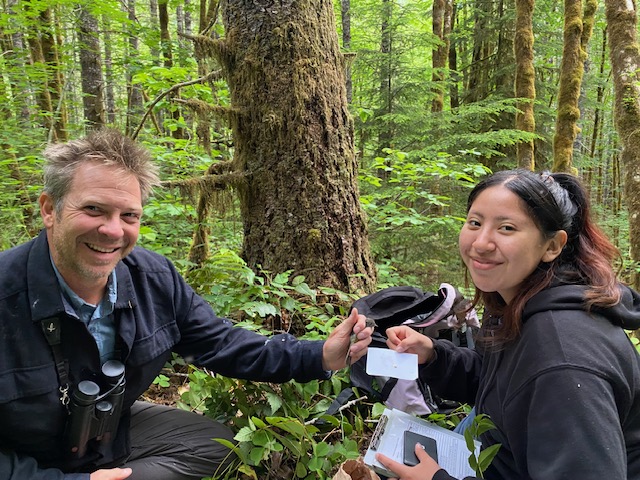
Gathering up nets and gear, four of us (Matt Johnson, Adlai Herrera, Matt Betts, and me) headed to high-elevation conifer forests, where we were fortunate to catch a Macgillivray’s warbler, as well as an Oregon junco and hermit thrush. It was there, I held the hermit warbler briefly in my hands and off he flew off like a wish.
In my book Halcyon Journey, In Search of the Belted Kingfisher, I shared my longing to know the way of birds with light hollow bones, feathers, and wings. On that day at the Andrews, I came a little closer to the feathered way.
What do the birds ask of us? I believe they are calling us to attend, observe closely, and listen with humility. Perhaps we might be ready to rise from the apprentice level when we have learned the more than 800 song variations of a Pacific wren. Until then, we must heed the prescient words of Aldo Leopold: “If the land mechanism as a whole is good then every part is good, whether we understand it or not…To keep every cog and wheel is the first precaution of intelligent tinkering.”
#
Reminder– Take action to protect mature and ancient forests that are essential for storing carbon and harboring biodiversity. The birds are singing and the message is urgent. June 20th is the deadline for comments.
Note–Please do not attract birds with audio recordings as a recreational activity. Follow the American Birding Association’s code of ethics.
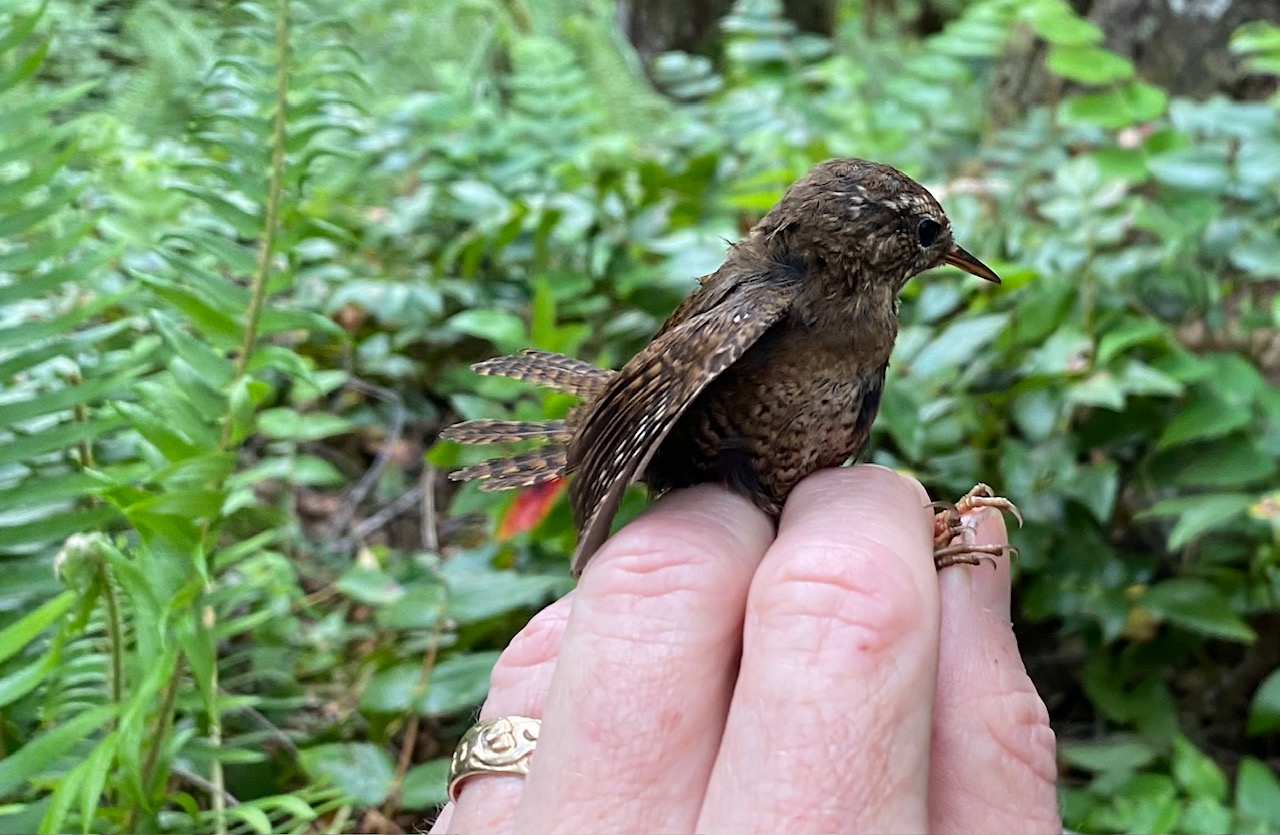
Pacific wren. ©Marina Richie
